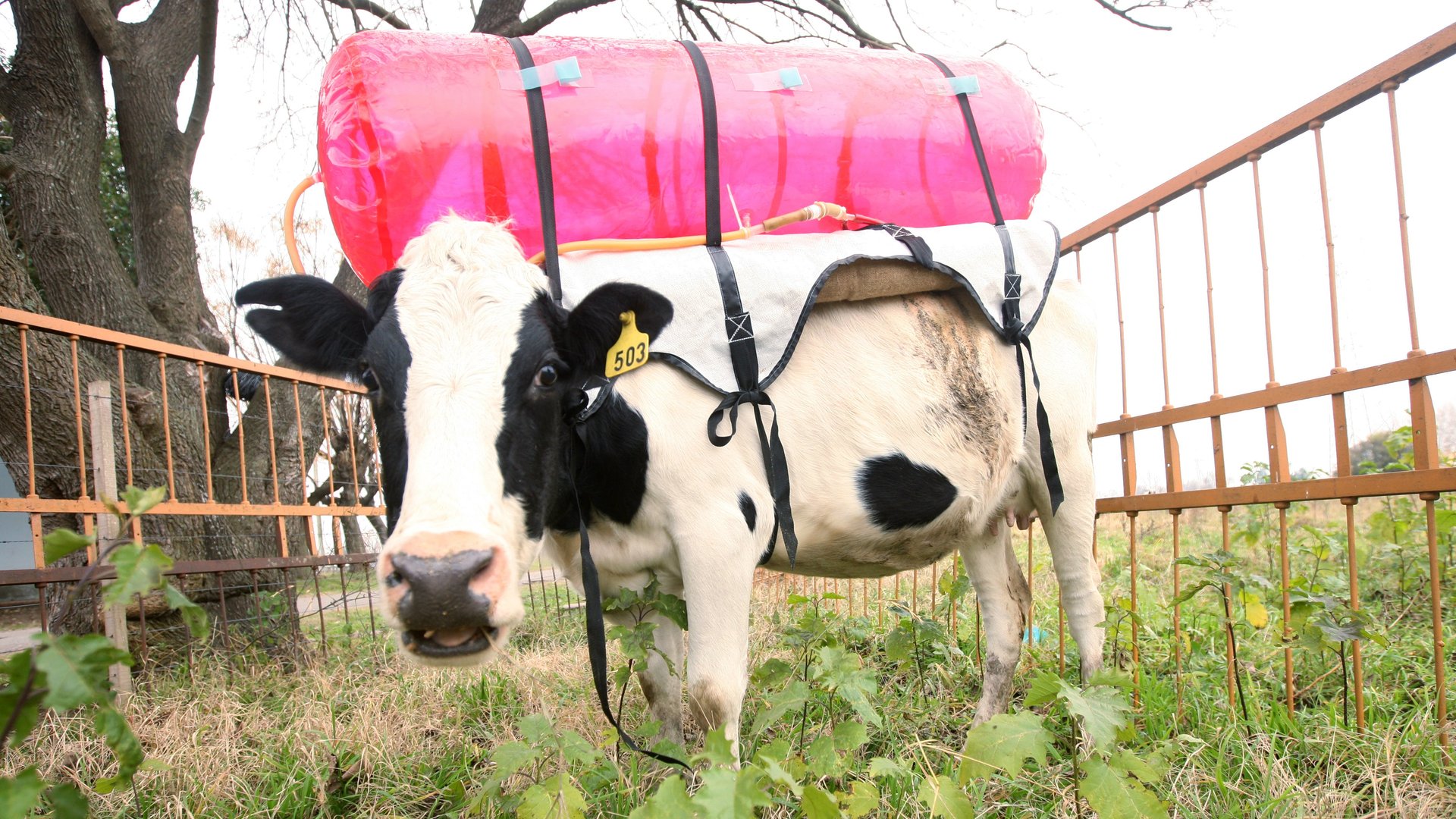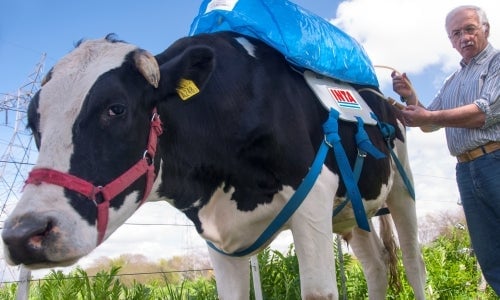The weird things farmers are doing to save the environment from flatulent cows
Humans have a crucial role to play in reducing greenhouse gas emissions to fight climate change. But then, so do cows.


Humans have a crucial role to play in reducing greenhouse gas emissions to fight climate change. But then, so do cows.
For starters, they pass a lot of gas.
Controlling the release of methane gas from cows’ digestive systems into the atmosphere is critical to curbing rising temperatures, according to a June report by the Consultative Group for International Agricultural Research. Meeting the United Nation’s climate agreement in Paris this year, which calls for limiting the earth’s rising temperatures to two degrees by 2030, will require big efforts by farmers to help reduce non-carbon dioxide emissions by 1 gigaton per year.
Enter the humble cow.
There are 1.3 to 1.5 billion of them on the planet, and each one produces enough methane every year to do the same amount of damage as four tons of carbon dioxide, which makes reining in their gas output gravely important.
The solutions of many beef producers involve capturing the gas before it spirals off into the clouds. In Argentina, some farmers are strapping backpacks onto cows, using the outerwear as a holding receptacle for the gas. According to the nation’s ministry of agribusiness, the backpacks are able to capture some of the nearly 300 liters of methane each cow emits per day, enough to produce the energy (Spanish) needed to run a refrigerator for a day.

According to a Bloomberg report, Cargill has used domed lagoons to capture methane from biodegrading cow manure, and Danone started feeding its cows Omega-3 fatty acids, because it reduced their emissions by 30%. That change also cut back on the amount of milk Danone cows were producing, though, which has sent the company’s scientists back to the drawing board.
Corporations making such efforts have an eye on their investors, who are increasingly skeptical of banking on the long-term success of businesses with sizable environmental footprints. In the US alone, methane gas from food animals makes up about 22% of all methane emissions. Cutting down on gas might give the cows (paywall) some relief, too.